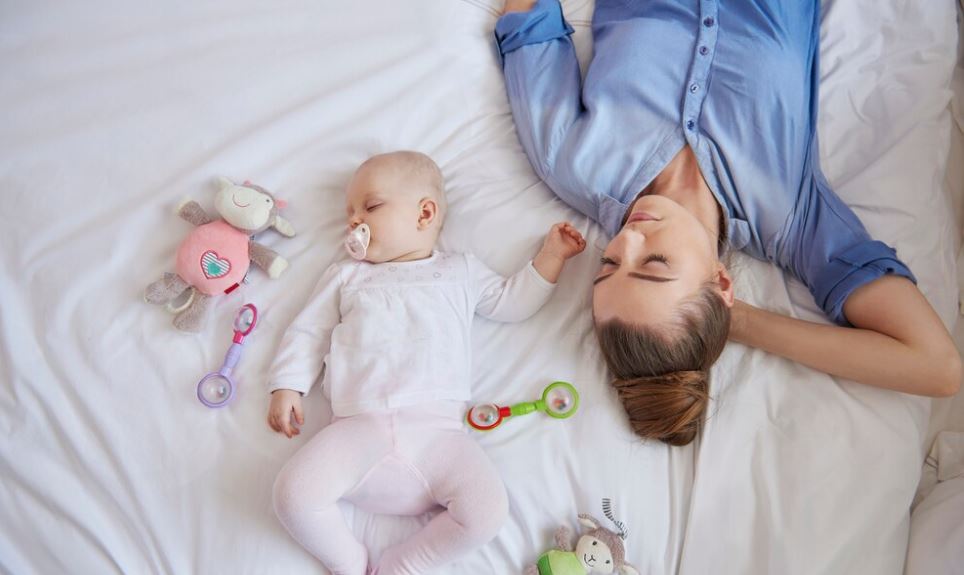
It can feel a lot like tuning a delicate instrument when you dress a baby for sleep; one mistake in layering can quickly ruin the entire sleep symphony. How to keep a baby warm enough for comfort while keeping them cool enough for safety is a nightly dilemma that parents everywhere must deal with.
By combining age-old knowledge with incredibly successful contemporary techniques, caregivers today can design sleep spaces that are not only comfortable but also much safer. As sleep science advances in the years to come, dressing infants with consideration for their sleep will continue to be a subtle yet potent show of love and protection.
Quick Dressing Guide for Baby Sleep
| Category | Best Practice | Purpose |
|---|---|---|
| Room Temperature | Target 16–20°C (61–68°F). | Significantly reduces risk of overheating. |
| Base Layer | Use soft, breathable bodysuits or vests. | Maintains an exceptionally clear, breathable foundation. |
| Sleep Sacks | Opt for fitted, sleeveless sleep sacks. | Highly efficient in preserving warmth without risk. |
| Fabric Choice | Favor cotton or bamboo blends. | Particularly beneficial for skin breathability and comfort. |
| Head Coverage | Always leave baby’s head uncovered. | Supports natural cooling and prevents overheating. |
| Temperature Check | Feel the neck, not hands or feet. | Offers a remarkably reliable measure of true body warmth. |
Safety and Comfort: Finding the Right Balance
In the field of infant care, there is a consistent correlation between overheating and a higher risk of SIDS. Not only is it a comfort measure to dress a baby appropriately, but it’s also an important layer of protection.
Parents can create the perfect microclimate that greatly improves overnight safety and encourages deep, undisturbed sleep by layering carefully, starting with a breathable bodysuit and modifying according to room temperature.
Seasonal Modifications: Clothes for Babies All Year Long
Keep it breezy and bare this summer.
Simplicity is your best friend on hot summer evenings. With just enough coverage to provide moderate warmth without trapping too much heat, a lightweight bodysuit or even just a diaper underneath a 0.5 TOG sleep sack can be incredibly effective at preventing overheating.
Autumn and Spring: Adaptable Layering
When temperatures fluctuate during the transitional months, layering becomes especially creative. A 1.5 TOG sleep sack added to a long-sleeved bamboo bodysuit allows parents to change the baby’s comfort level without disturbing a soundly sleeping infant.
Winter: Weightless Warmth
A cozy footed sleepsuit layered under a 2.5 TOG sleep sack is an extremely effective combination in the cold embrace of winter, keeping babies snug even as room temperatures drop. Imagine it as encasing your child in an exceptionally resilient cocoon of soft warmth.
Why Fabric Is More Important Than You May Think
When it comes to baby sleep safety, fabric selection is extremely versatile. Natural fibers that wick away moisture and maintain their softness against sensitive skin, like bamboo viscose and organic cotton, excel at dynamically controlling temperature.
Adding breathable materials to your baby’s nightwear significantly enhances comfort and health outcomes by establishing a peaceful environment where skin can breathe and sleep cycles aren’t disrupted.
How to Determine Whether Your Infant Is Properly Dressed
Experts advise feeling the back of your baby’s neck instead of depending on cooler extremities, which can frequently mislead even experienced parents. You probably have the ideal layering if it feels warm but dry.
Pediatricians have been emphasizing lately that it’s safer to wear a little less clothing than to run the risk of overheating. A baby who is comfortably cool is a significantly healthier baby in terms of sleep safety.
Clothing Infants at Various Growth Stages
Newborns: By creating a womb-like sensation, a form-fitting bodysuit combined with a breathable swaddle or newborn sleep bag can greatly ease the early sleep transitions.
Mobile Babies (4–12 months): A long-sleeved sleeper with a sleep sack becomes immensely adaptable as babies start rolling and wriggling, keeping them warm while permitting safe, unhindered movement throughout the night.
Your baby’s nights will stay calm, secure, and incredibly restorative if you carefully modify their sleepwear as they reach each developmental milestone.
How to Dress Carefully and Confidently for Dreamland
Although dressing your infant for sleep may seem like a minor choice, it has a significant impact. Parents create a bedtime routine that protects life itself by layering wisely, selecting breathable materials, and carefully avoiding overheating.
These seemingly straightforward decisions, which are based on comfort, instinct, and incredibly well-informed care, will remain at the core of safe sleep for the next ten years as advancements in baby sleepwear take shape.
